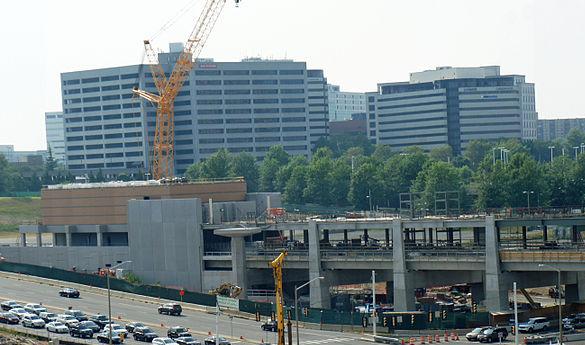Mason students propose “pop-up developments” for new Silver Line stations
With the final pieces of the Metro Silver Line project being completed, students at George Mason University’s School of Public Policy are looking for ways to draw people to the new Metro stations.
While the Silver Line was being planned, Fairfax County officials used the opportunity to propose changes to the Tysons Corner area, taking steps to increase its residential population and business presence, and to make the area more pedestrian friendly.
Implementation of the redevelopment plan only began this year. Until those changes are complete, some developers and county officials are looking for ways to draw people to the area around the new stations, which will remain vacant for some time.
“Once people get off the train…either not much is there or it’s not very lively,” said Laurie Schintler, an associate professor at the School of Public Policy. “The idea is to put something in place temporarily that will entice people to those locations.”
Students in Schintler’s class are working on temporary solutions to improve the aesthetics and vibrancy of the stations.
"‘Pop-up’ infrastructure describes temporary infrastructure that is easy to put up and take down, such as shipping-container retail space or food trucks,” said Julie Evans, one of the student leaders for the project, in an email. “A ‘pop-up development’ could be anything from retail to a small-scale festival.”
The proposed ideas are only meant to be temporary placeholders before new apartments, parks and other amenities are built around the stations; project members are looking at how best to integrate the developments with the community.
“We have focused on four components of traveler needs: continued mobility, information/aesthetic components, entertainment and retail/commercial infrastructure,” Evans said. “Our goal was to incorporate elements from each component into the plan for each metro stop to utilize available space and resources to provide a well-rounded array of services to travelers at the new stops.”
Evans and others have been working with a developer in Tysons, as well as the office of Sharon Bulova, chairman of the Fairfax County Board of Supervisors.
Both Schintler and Evans hope that the county uses the recommendations that will be provided in their report.
“Ideally, our report would inspire the county and Tyson's developers to implement all of the ideas in our development plan at the new metro stations, but I think they will likely pick out the projects that are feasible and low-cost as a start,” Evans said.
The Silver Line is expected to open at the end of this year.

